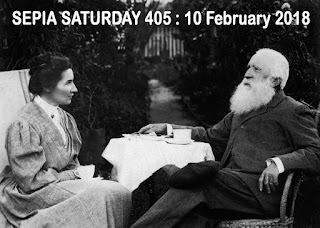My first photo below was taken on thed beach at Malua Bay in January 1991 and shows a lineup of cousins, namely the eight grandchildren of Bob and Mary Featherston. My husband and the father of four of the children can also be seen in the photo, and I think Bob Featherston appears in another shot with the children that I don't seem to have. The children, their parents and grandparents were all staying in or around the family beach house at Malua for a few days after Christmas. I've posted before about the beach house and if you click here you can see that it is not very big!
I think this was possibly the only time that we were all at Malua together, and there have not been very many occasions since then when all the cousins have gathered, other than very occasionally at Christmas when they were still young. Now two of the eight live with their families in London and the others are scattered around Australia. Seven attended at a wedding of the cousin on the far right two years ago. Their grandfather Bob passed away just over a year after the beach lineup photos were taken, and I believe the photo with him is one of his wife Mary's favourites. I don't know what the grey square in the middle of the photo is, but perhaps it was an indication on the pre-digital film that the end of the roll had been reached.
Above is the father of 4 reading on the beach in January 2017, at Winda Woppa on the mid-north coast of New South Wales. We were enjoying the peace and quite after a hectic visit by our English grandchildren, whose mother is in the pink and white polka dot costume in the photo above, You may think this photo is cousin-free, but in fact the book he is reading was written by his American 4th cousin Clayton Swisher. Clayton whom we had recently met lives in Doha and works for Al Jazeera English and the title of his book is The Truth about Camp David. It's an interesting read.
It's winter here in Australia and the weather is not very beachy, but last weekend at my favourite Hawks Nest beach I still managed to catch some nice views and even caught a rainbow in the early morning.
For more beach reflections check out Sepia Saturday #422
Comments (deleted in error but all except one copied and reposted here)

















































